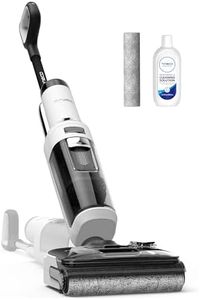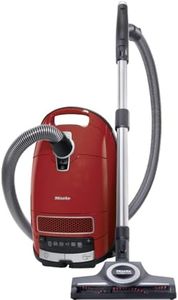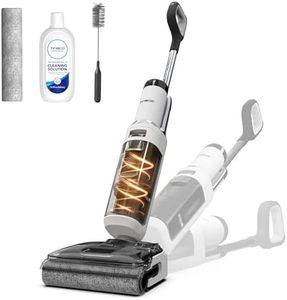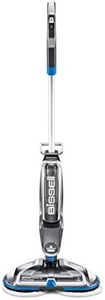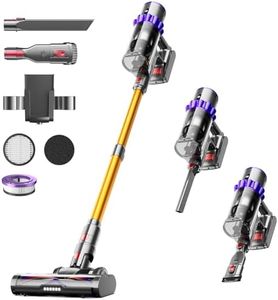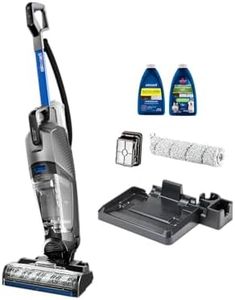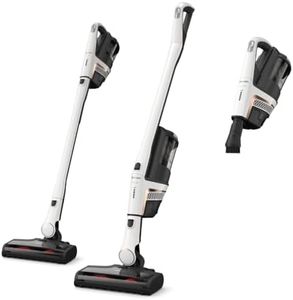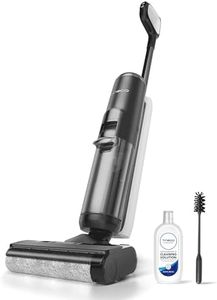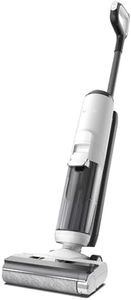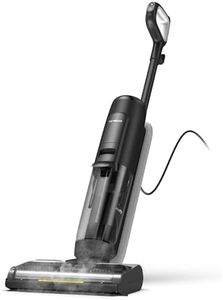We Use CookiesWe use cookies to enhance the security, performance,
functionality and for analytical and promotional activities. By continuing to browse this site you
are agreeing to our privacy policy
10 Best Hardwood Floor Vacuums
From leading brands and best sellers available on the web.By clicking on a link to a third party's website, log data is shared with that third party.
Buying Guide for the Best Hardwood Floor Vacuums
Choosing the right vacuum cleaner for hardwood floors is essential for both cleanliness and floor protection. Hardwood floors require gentle yet effective cleaning to avoid scratches and maintain their natural beauty. Unlike carpets, these hard surfaces need vacuums that can pick up dust and debris without damaging the finish. Understanding the main features will help you select a vacuum that meets your specific needs and ensures your hardwood floors stay in top condition.Suction PowerSuction power refers to how strongly the vacuum can pull in dust and dirt. For hardwood floors, extreme suction isn't always better, as too much force can sometimes scatter debris or pull in larger objects that could scratch the surface. In general, moderate suction settings work well for capturing dust and small particles typical of hard floors. Most users should look for a vacuum with adjustable suction, allowing them to lower power for delicate finishes and bump it up when tackling heavier messes or pet hair.
Brush DesignThe type of brush a vacuum uses is critical for hardwood floors. Rolling brushes with stiff bristles can scratch and wear down the floor's surface. For hardwood, the best options are soft-bristled brushes, brushless heads, or a vacuum with the option to turn off the brush roll completely. If you have a mix of flooring, choosing a vacuum that lets you switch between brush modes is helpful. Always go for the gentler, softer attachment when cleaning hardwood.
Weight and ManeuverabilityA lightweight and easy-to-maneuver vacuum is better suited for hardwood floors, especially if you have a lot of open space or multiple rooms. Heavier models can be tough to push and may even leave marks if dragged or mishandled. Upright, stick, and canister vacuums all vary in weight. Stick vacuums are the lightest and easiest to move, making them a favorite for quick and frequent cleanups. Choose a vacuum you'll be comfortable carrying around your home, especially if you have stairs.
FiltrationFiltration refers to how well the vacuum traps dust and allergens instead of releasing them back into the air. For homes with allergy sufferers or pets, a vacuum with a good filtration system, like a HEPA filter, is valuable. Basic filters are fine for general use, but high-efficiency filters are better for people who are sensitive to dust. Pick this feature based on your family's health needs and the level of dust you usually deal with.
Floor Protection FeaturesLook for features like rubber wheels or padding that prevent scratches and marks on your hardwood floors. Hard plastic wheels can leave scuffs, so soft materials are preferable. Additionally, edge cleaning features or specialized attachments can help reach tight corners without risking damage. If you have highly polished or newer floors, protective features are especially important.
Noise LevelVacuums vary significantly in how loud they are. Hard floors can amplify vacuum noise compared to carpets. If you have young children, pets, or prefer a quieter environment, check the manufacturer's decibel (dB) ratings. Quiet models are typically under 70 dB and are more comfortable to use for extended periods. Choose based on how much noise you can tolerate or need to minimize.
Versatility and AttachmentsThe range of attachments can make a vacuum more useful, especially if you need to clean baseboards, edges, or above-floor areas. Look for models with dedicated hardwood floor tools, crevice tools, and gentle dust brushes. If your cleaning needs extend beyond the floor—furniture, stairs, or car interiors—these add-ons can make a big difference in how well your vacuum performs.
